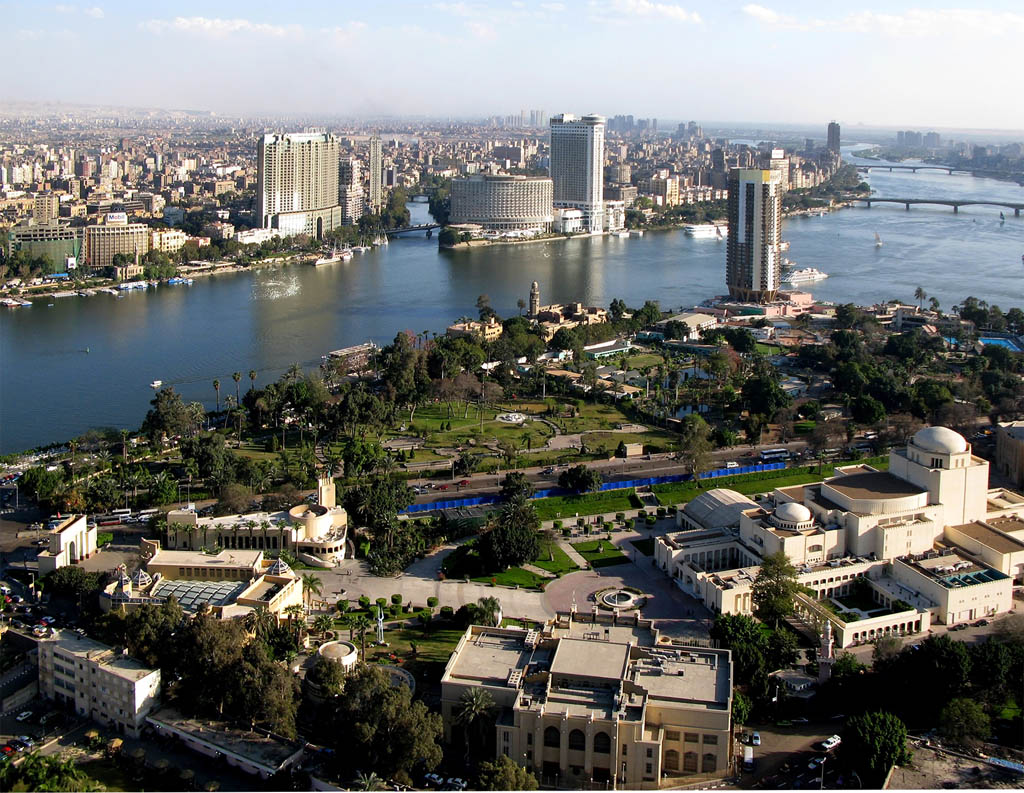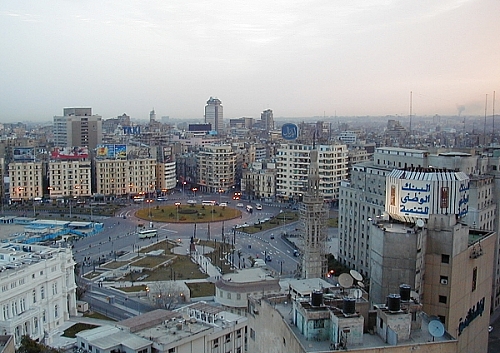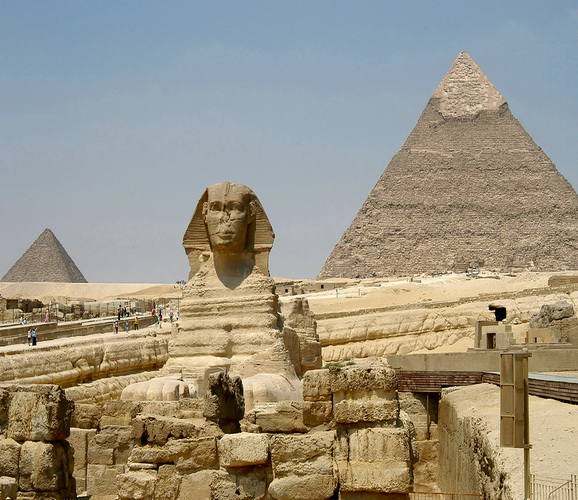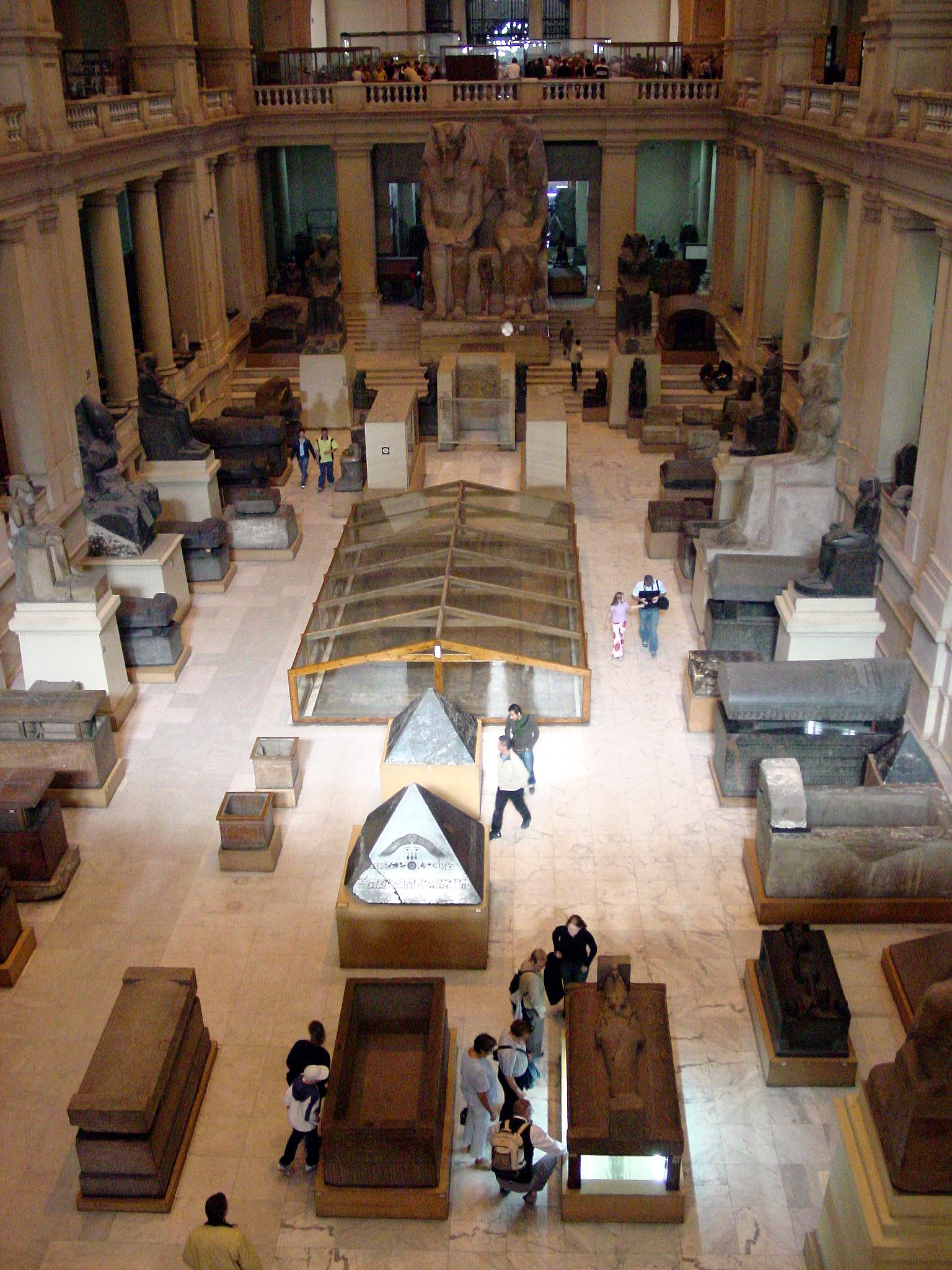Cairo is the capital and largest city of Egypt. It is the Arab World's largest and Africa's most populous city While Al-Qahirah is the official name of the city, in Egyptian Arabic it is called by the dialect's name for the country, Masr. (Egypt's first Arab capital, Fustat, was known as Misr al-Fustat, "City of the Tents".)
Cairo was founded by the Fatimid caliphs as a royal enclosure. It replaced Fustat as the seat of the government. It later came under the Mamluks, was ruled by the Ottomans 1517 to 1798, and briefly occupied by Napoleon. Muhammad Ali of Egypt made Cairo the capital of his independent empire from 1805 to 1882, after which the British took control of it until Egypt attained independence in 1922.
Cairo has a population of about 22 million people, according to the 2006 population census. Cairo is the fourth most populous metropolitan area in the world. It is also the most populous metropolitan area in Africa.
Cairo has a mix of historical and modern cultural sights. This includes the Pyramids & Sphinx at Giza, Step Pyramid at Sakkara, The Egyptian Museum, Old Cairo including the oldest churches in the whole world, Saladin's Citadel including the beautiful Mosque of Mohammad Ali, Khan El-Khalili Market.

Pyramids and Sphinx

Pyramids and Sphinx
The Giza Necropolis stands on the Giza Plateau, on the outskirts of Cairo, Egypt. This complex of ancient monuments is located some 8 km (5 miles) inland into the desert from the old town of Giza on the Nile, some 25 km (15 miles) southwest of Cairo city centre.
One of the monuments, the Great Pyramid of Giza, is the only remaining monument of the Seven Wonders of the Ancient World. This Ancient Egyptian necropolis consists of the Pyramid of Khufu (known as the Great Pyramid and the Pyramid of Cheops) the somewhat smaller Pyramid of Khafre (or Chephren) a few hundred meters to the south-west, and the relatively modest-size Pyramid of Menkaur (or Mykerinos) a few hundred meters further south-west, along with a number of smaller satellite edifices, known as "queens" pyramids, causeways and valley pyramids.
The Great Sphinx lies on the east side of the complex, facing east. Current consensus among Egyptologists is that the head of the Great Sphinx is that of Khafre. Associated with these royal monuments are the tombs of high officials and much later burials and monuments (from the New Kingdom onwards), signifying the reverence to those buried in the necropolis. Of the four, only Menkaure's Pyramid is seen today without any of its original polished limestone casing, with Khafre's Pyramid retaining a prominent display of casing stones at its apex, while Khufu's Pyramid maintains a more limited collection at its base. Khafre's Pyramid appears larger than the adjacent Khufu Pyramid by virtue of its more elevated location, and the steeper angle of inclination of its construction – it is, in fact, smaller in both height and volume.
The most active phase of construction here was in the 25th century BC. It was popularized in Hellenistic times when the Great Pyramid was listed by Antipater of Sidon as one of the Seven Wonders of the World. Today it is the only one of the ancient Wonders still in existence. Due largely to 19th-century images, the pyramids of Giza are generally thought of by foreigners as lying in a remote, desert location, even though they are located in what is now part of the most populous city in Africa.
In fact, urban development reaches right up to the perimeter of the antiquities site.The ancient sites in the Memphis area, including those at Giza, together with those at Saqqar, Dahshur, Abu Ruwaysh, and Abusir, were collectively declared a World Heritage Site in 1979.
Khan EL-Khalili Market
Khan EL-Khalili Market
The Bazzar dates back to 1382, when Emir Djaharks el-Khalili built a large caravanserai ( khan in Arabic) in Cairo under the Burji Mamluk Sultan Barquq (1382- 1399 A.D.); the eponymous khan is still extant. It was also known Turkish bazaar during the Ottoman Empire. In addition to shops, there are several coffeehouses (مقهى maqha or قهوة qahwah, depending on dialect), restaurants, and street food vendors distributed throughout the market. The coffee shops are generally small and quite traditional, serving Arabic coffee and usually offering shisha. The al-Hussein Mosque is also in Khan el-Khalili; Al-Azhar University and its mosque are not far away.
The Egyptian Museum
The Egyptian Museum of Antiquities contains many important pieces of history. Not only does it house the world’s largest collection of Pharaonic antiquities, it also houses the many treasures of King Tutankhamen, and many interesting statues that moved with the museums many relocations. The Egyptian government established the museum, built in 1835 near the Azbakian Gardens. The museum soon moved to Boulaq in 1858 because the original building was too small to hold all of the artifacts. In 1855, shortly after the artifacts were moved, Duke Maximilian of Austria was given all of the artifacts. He hired a French architect to design and construct a new museum for the antiquities. The new building was to be constructed on the bank of the Nile River in Boulaq. In 1878, after the museum was completed for some time, it suffered irreversible damage; a flood of the Nile River caused the antiquities to be relocated to another museum, in Giza. The artifacts remained there until 1902 when they were moved, for the last time to the current museum in Tahrir Square.
This museum is home to hundreds of ancient artifacts that gives us a look at the wonderful mysteries on how Ancient Egyptians lived life along the Great Nile River. This is also a very famous museum that attracts the attention of many tourists around the world. There are two main floors of the museum, the ground floor and the first floor. On the ground floor visitors will find an extensive collection of papyrus and coins used in the Ancient world. The numerous pieces of papyrus are generally small fragments, due to their decay over the past two millennia. Several languages are found on these pieces, including Greek, Latin, Arabic, and the Ancient Egyptian writing language of hieroglyphs. The coins found on this floor are made of many different elements, including gold, silver, and bronze. The coins are not only Egyptian, but also Greek, Roman, and Islamic, which has helped historians research the history of Ancient Egyptian trade. Also on the ground floor are artifacts from the New Kingdom, the time period between 1550 and 1070 BC. These artifacts are generally larger than items created in earlier centuries. Those items include statues, tables, and coffins.
If visitors follow these displays in chronological order they will end up on the first floor, which contains artifacts from the final two dynasties of Ancient Egypt. Some artifacts in this area include items from the tombs of the Pharaohs Tuhtmosis III, Tuhtmosis IV, Amenophis II, Hatshepsut, and Maherpen, and also many artifacts taken from the legendary Valley of the Kings.












